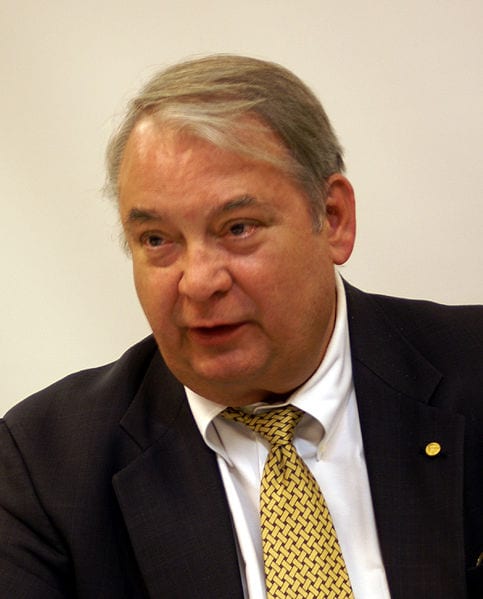A month into my Ph.D. program, I remember my advisor reminiscing about how his uncle had to have hip replacement surgery. Sadly, his uncle did not survive due to complications post-surgery caused by blood clots and infections on the replaced hip. A decade later, his determination to prevent such cases, resulted in the development of biomedical device coatings which could prevent both blood clots and infection simultaneously. At the helm of this technology was the discovery of a miracle molecule, nitric oxide (abbreviated as NO).
Prior to its discovery, NO was largely known to be a toxic atmospheric pollutant produced by burning nitrogen, especially from car exhausts and cigarettes. Therefore, it was very surprising when during the 70's and 80's, American scientists Robert Furchgott (SUNY- Brooklyn), Ferid Murad (University of Texas Medical School), and Louis Ignarro (UCLA) independently discovered the physiological role of NO while unraveling the mystery of why blood vessels contract or relax.
Back in those days, it was common knowledge that nitroglycerin helped reduce chest pain and relax blood vessels in patients diagnosed with angina but no one really understood how it worked. In 1977, while investigating how nitroglycerin helped relax blood vessels, Ferid Murrad discovered that it released NO which in turn relaxed the smooth muscle cells in the blood vessels. During the 80's Robert Furchgott and his group also investigating relaxation of blood vessels, found that a signaling molecule promoted the relaxation of the muscles of the blood vessels. Later, both Furchgott and Ignarro, working independently, found this molecule to be none other than NO. For their phenomenal break-through discovery Furchgott, Ignarro, and Murad were duly awarded the 1998 Nobel Prize in Medicine.

In 1990, Warren ‘Dr. Adventure' Zapol and his team at Massachusetts General Hospital administered NO for the first time in history to a human newborn suffering from blue baby syndrome due to pulmonary hypertension. Within minutes of administering NO, the baby turned from blue to pink and had restored blood flow in the lungs. Without NO therapy, blue babies would have been placed in artificial lungs and undergone painful surgical interventions. A decade later, the success of this team led to the Food and Drug Administration (FDA) approval of NO as standard treatment for babies with pulmonary hypertension. While conventional therapy had a high mortality rate along with the risk of medical abnormalities, and most cases required life support, inhaled NO reduced the need for it without increasing neurodevelopmental, behavioral, or medical abnormalities at 2 years of age. Today around 30,000 patients per year, both babies and adults, are administered nitric oxide for various distresses.
In 1992 ,it was discovered that NO is the key messenger in male erection. A few months later, scientists' all over the world declared NO as the ‘Molecule of the Year'. The American Association of Advancement of Science (AAAS), which organizes the Molecule of the Year award in association with Science magazine remarked, “Aside from the discovery of NO as the first gas to behave as a biological messenger molecule, scientists are amazed at the range of bodily activities it appears to influence.â€
A cascade of research activity on NO over the following decades led to exciting discoveries and a better understanding of how our body works and how that knowledge can be used to engineer better biomedical devices. There now exists a whole body of literature which highlights that production of NO by our body promotes wound healing and regeneration, and also protects from various heart-related diseases like strokes and angina, as well as infections. Researchers have demonstrated that tiny amounts of the gas are essential for the normal functioning of the immune system, liver, pancreas, reproductive system, nervous system and lungs to name a few. With increasing age, our NO production reduces and this deficiency leaves people vulnerable to diseases like arteriosclerosis, high blood pressure, and other heart diseases. Taking cues from the body's production of NO, scientists are now translating biomedical device-coating technologies that release NO once it comes into contact with the body. This can potentially prevent the risk of infections and blood clots after surgeries. As one of the Nobel laureates, Louis Ignarro explains, “There may be no disease process where this miracle molecule does not have a protective role.â€
A hold of irresistible fascination over nitric oxide is shaping the technological future of the biomedical industry. Perhaps, the relentless struggle, by people like my advisor to find a solution will prevent an untimely end like his uncle's.
Featured image credit: Science Magazine

About the Author
- athenssciencecafehttps://athensscienceobserver.com/author/athenssciencecafe/April 17, 2020
- athenssciencecafehttps://athensscienceobserver.com/author/athenssciencecafe/April 12, 2020
- athenssciencecafehttps://athensscienceobserver.com/author/athenssciencecafe/April 3, 2020
- athenssciencecafehttps://athensscienceobserver.com/author/athenssciencecafe/March 30, 2020










